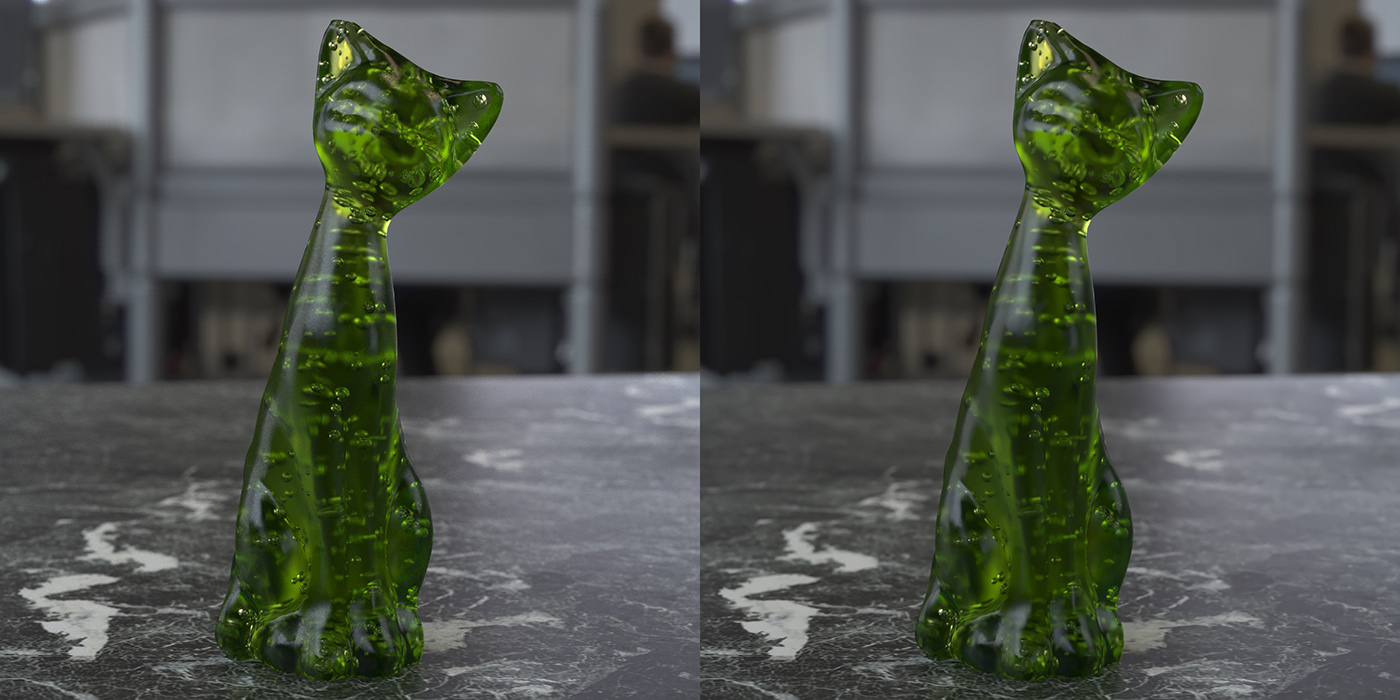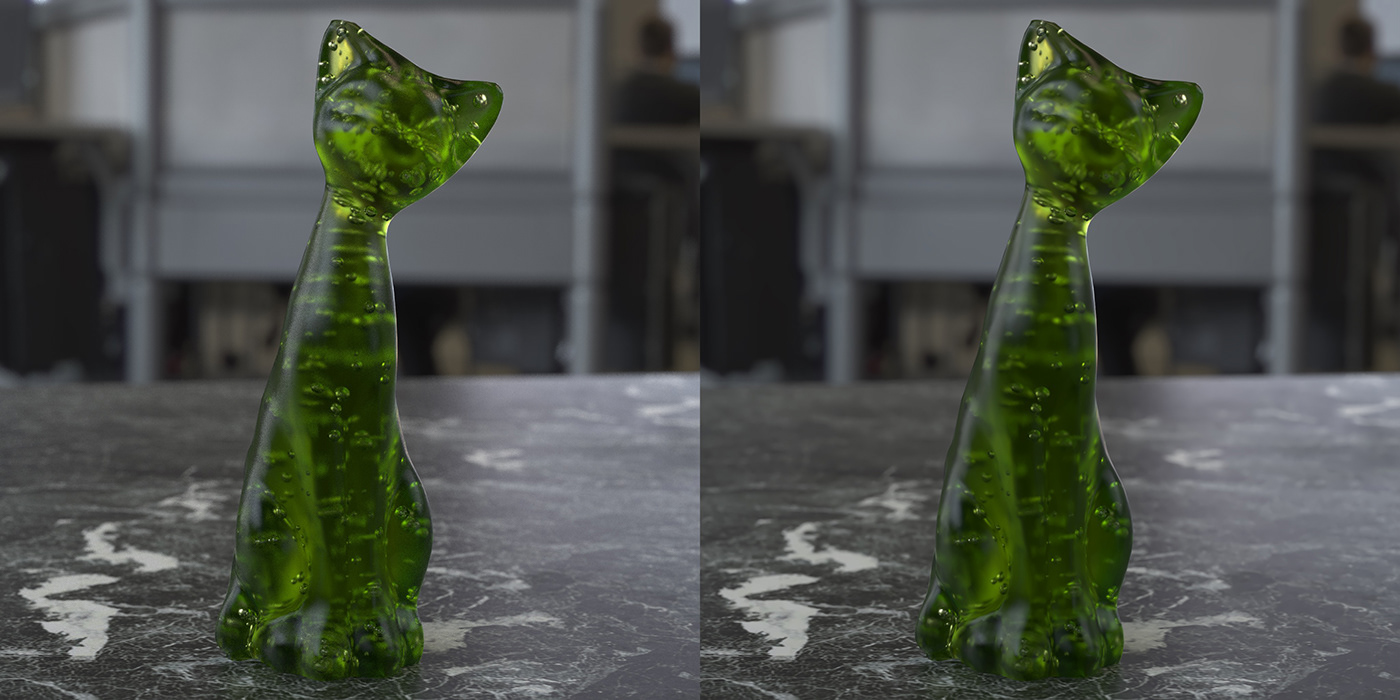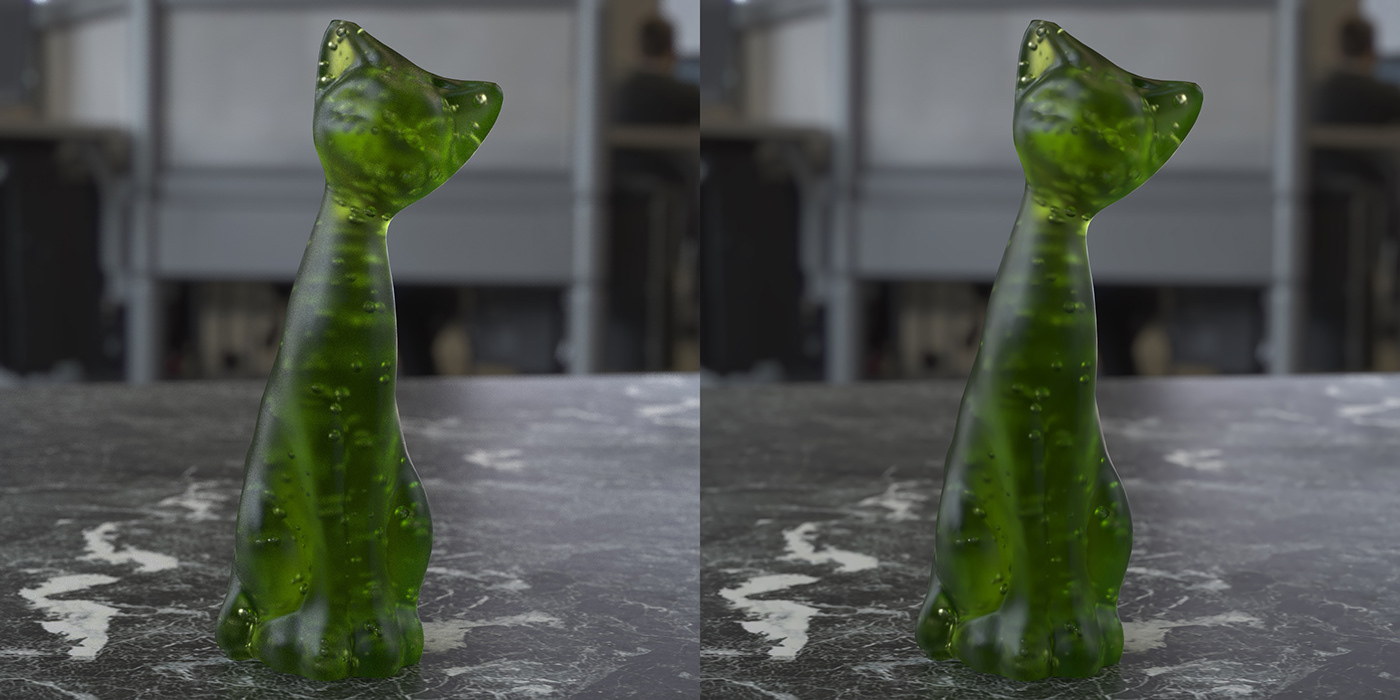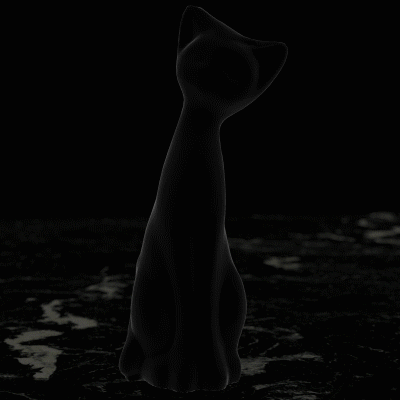Maxwell 5.2 NEW DENOISER
FROSTED GLASS
Quick video tutorial on using Maxwell's new Denoiser when working with Frosted Glass materials. Also a quick overview of how scene was set up (lights, materials, camera settings and etc)

Size: 2k, Render time: 10 minutes, SL: 10, Denoiser settings (CI1 0.2, CI2 0.2, FI 0.15, FP 0.45, FR 10)
Initially for this tutorial I've made 3 different glass materials with different level of frostiness. Here are some side to side comparisons.
For all three examples I've used same Denoiser settings:
Colour influence 1: 0.200
Colour influence 2: 0.200
Feature influence: 0.150
Final Pass: 0.450
Filter Radius: 10
the differences are only in material's roughness and R2 settings (fresnel curve)
All images below are raw renders

Surface roughness: 12, regular fresnel curve (no R2 adjustment)

Surface roughness: 16, R2: 70 / 30

Surface roughness: 26, R2: 70 / 30
And check this out - this little gif nicely illustrates how Bidirectional scattering distribution works for transparent objects in unbiased render engine.

There are 3 different roughness values (12 / 16 / 26) and beside surface reflections being either more, or less rough - you can also observe how bubbles inside are blurred based on their proximity to the edge of the object.
The further they are away - the stronger the effect.
Notice how some of the bubbles, that are closer to the edge of the surface, are almost not affected by roughness change.
And .. here is how my R2 parameter (custom fresnel curve) worked for me.

Reflectance channel
With the help of R2 - even with a rough surface we can still maintain bright colours, while having that nice sheen on the edges.
Cheers! 🙌🏼


